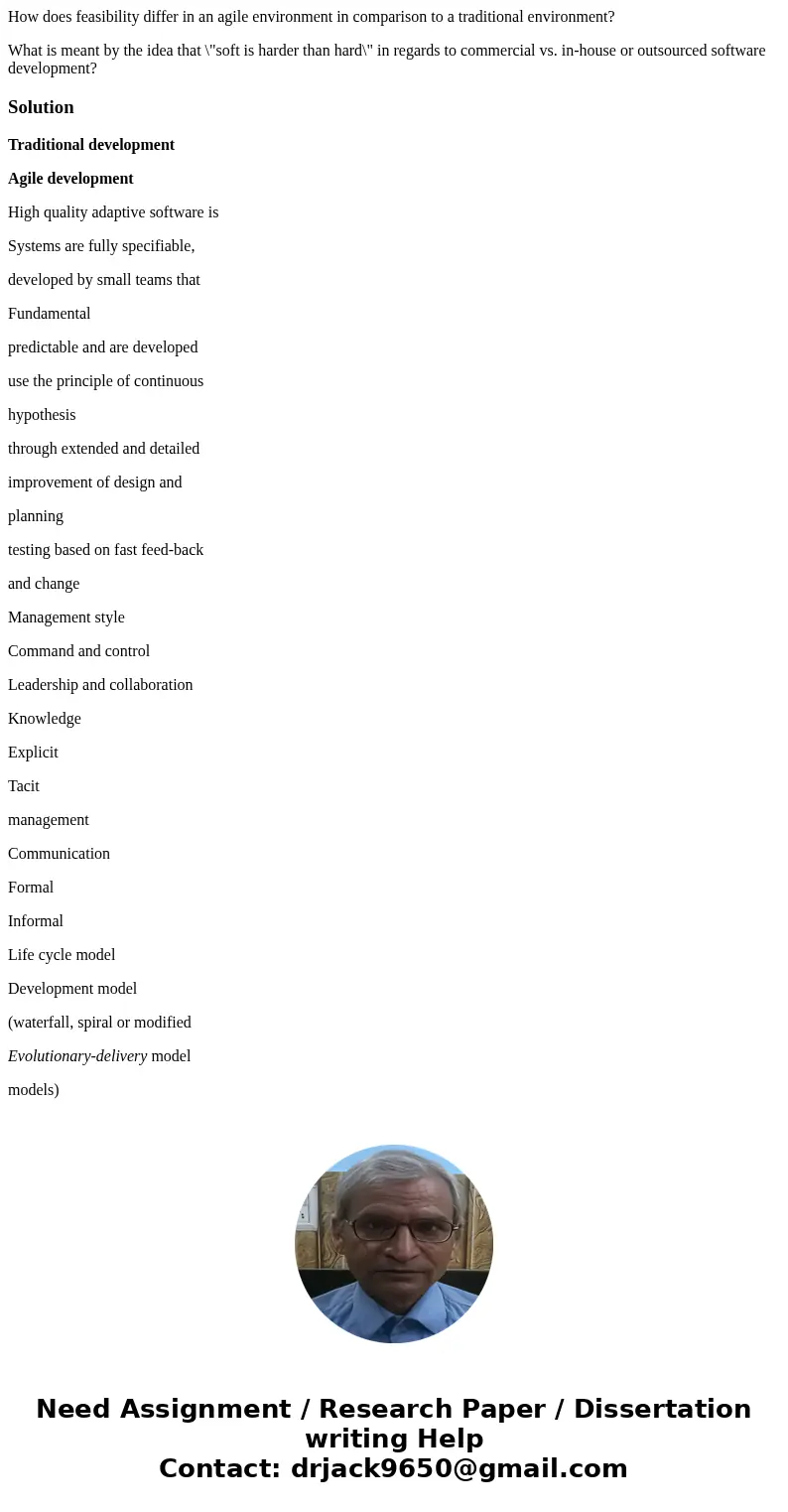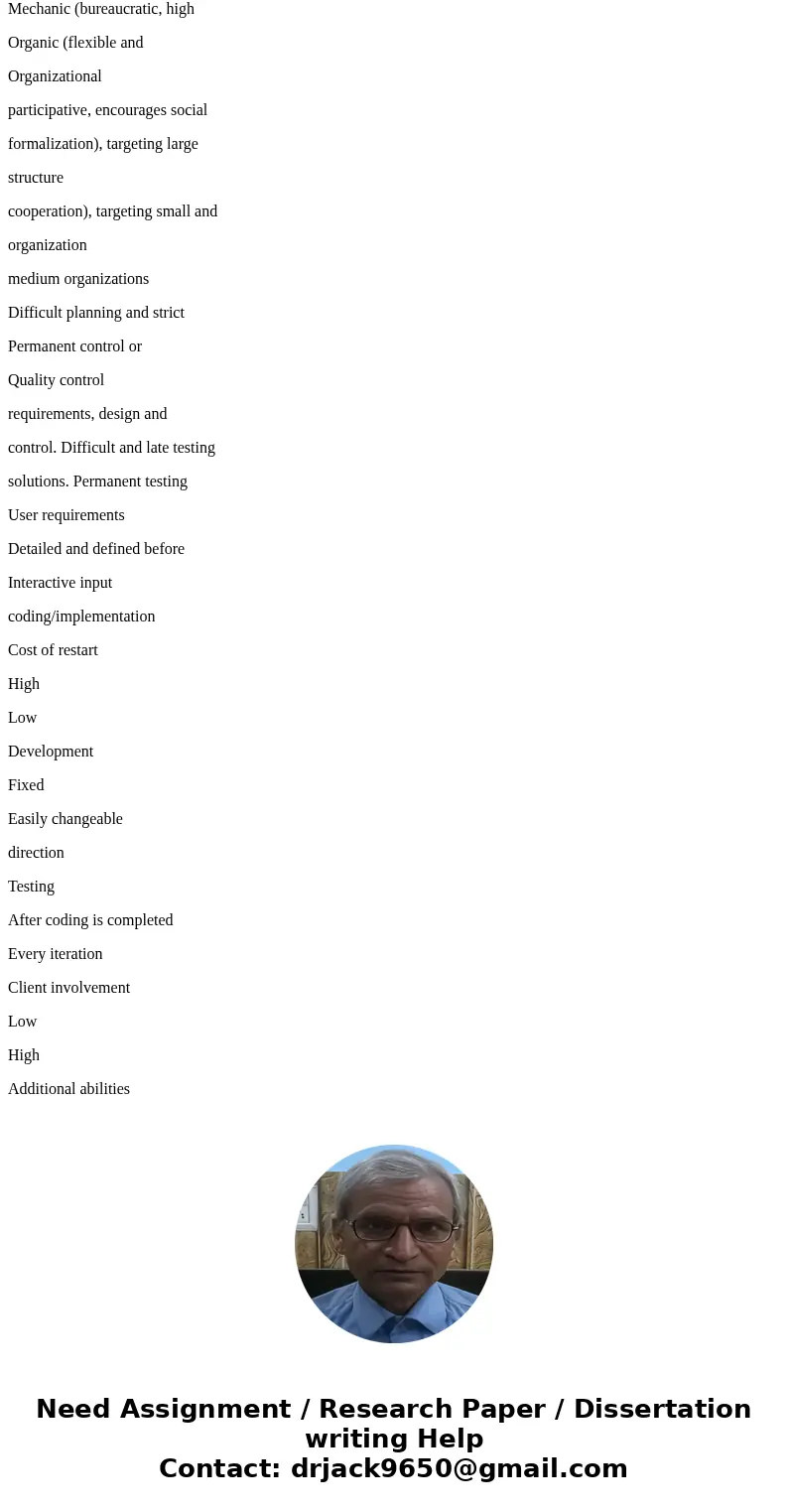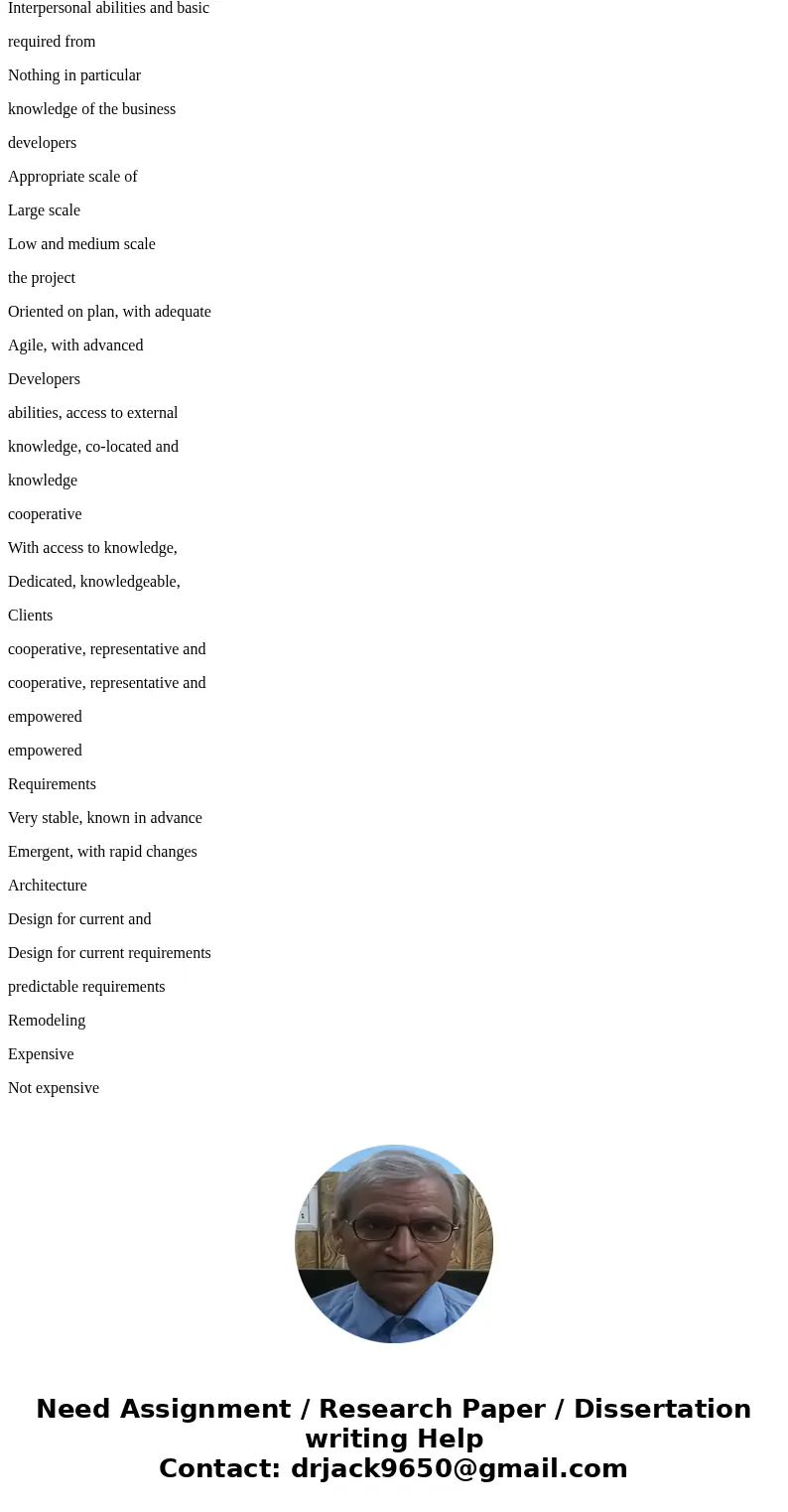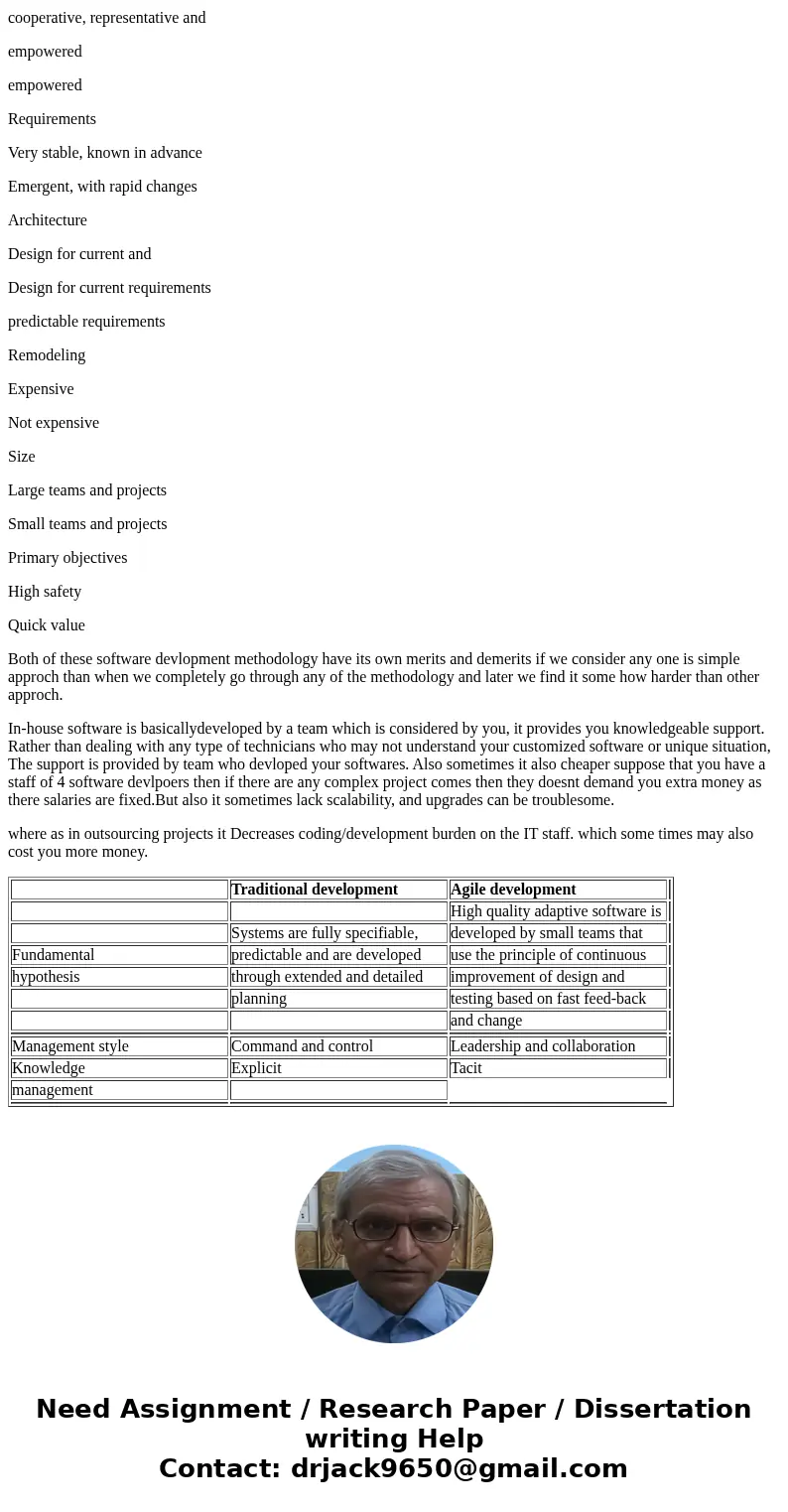How does feasibility differ in an agile environment in compa
How does feasibility differ in an agile environment in comparison to a traditional environment?
What is meant by the idea that \"soft is harder than hard\" in regards to commercial vs. in-house or outsourced software development?
Solution
Traditional development
Agile development
High quality adaptive software is
Systems are fully specifiable,
developed by small teams that
Fundamental
predictable and are developed
use the principle of continuous
hypothesis
through extended and detailed
improvement of design and
planning
testing based on fast feed-back
and change
Management style
Command and control
Leadership and collaboration
Knowledge
Explicit
Tacit
management
Communication
Formal
Informal
Life cycle model
Development model
(waterfall, spiral or modified
Evolutionary-delivery model
models)
Mechanic (bureaucratic, high
Organic (flexible and
Organizational
participative, encourages social
formalization), targeting large
structure
cooperation), targeting small and
organization
medium organizations
Difficult planning and strict
Permanent control or
Quality control
requirements, design and
control. Difficult and late testing
solutions. Permanent testing
User requirements
Detailed and defined before
Interactive input
coding/implementation
Cost of restart
High
Low
Development
Fixed
Easily changeable
direction
Testing
After coding is completed
Every iteration
Client involvement
Low
High
Additional abilities
Interpersonal abilities and basic
required from
Nothing in particular
knowledge of the business
developers
Appropriate scale of
Large scale
Low and medium scale
the project
Oriented on plan, with adequate
Agile, with advanced
Developers
abilities, access to external
knowledge, co-located and
knowledge
cooperative
With access to knowledge,
Dedicated, knowledgeable,
Clients
cooperative, representative and
cooperative, representative and
empowered
empowered
Requirements
Very stable, known in advance
Emergent, with rapid changes
Architecture
Design for current and
Design for current requirements
predictable requirements
Remodeling
Expensive
Not expensive
Size
Large teams and projects
Small teams and projects
Primary objectives
High safety
Quick value
Both of these software devlopment methodology have its own merits and demerits if we consider any one is simple approch than when we completely go through any of the methodology and later we find it some how harder than other approch.
In-house software is basicallydeveloped by a team which is considered by you, it provides you knowledgeable support. Rather than dealing with any type of technicians who may not understand your customized software or unique situation, The support is provided by team who devloped your softwares. Also sometimes it also cheaper suppose that you have a staff of 4 software devlpoers then if there are any complex project comes then they doesnt demand you extra money as there salaries are fixed.But also it sometimes lack scalability, and upgrades can be troublesome.
where as in outsourcing projects it Decreases coding/development burden on the IT staff. which some times may also cost you more money.
| Traditional development | Agile development | ||
| High quality adaptive software is | |||
| Systems are fully specifiable, | developed by small teams that | ||
| Fundamental | predictable and are developed | use the principle of continuous | |
| hypothesis | through extended and detailed | improvement of design and | |
| planning | testing based on fast feed-back | ||
| and change | |||
| Management style | Command and control | Leadership and collaboration | |
| Knowledge | Explicit | Tacit | |
| management | |||




 Homework Sourse
Homework Sourse